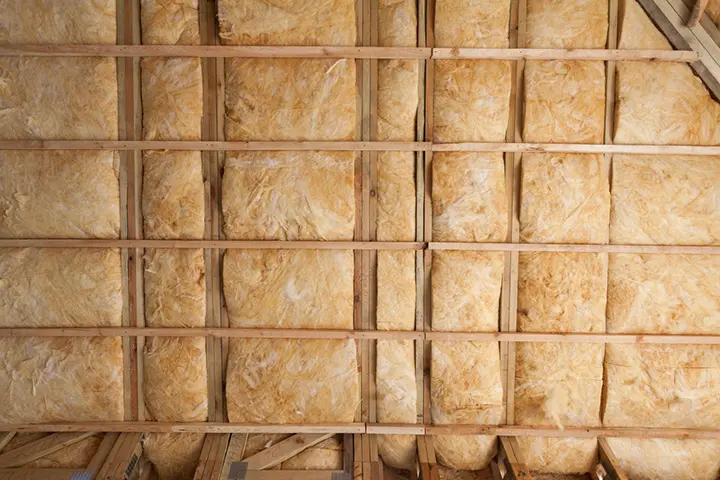Install Wall Insulation Service

The best way to save on energy bills is to have a well-insulated home. And solid wall insulation can also reduce noise coming to or from your home. There will be no more chilly nights or hot days. And no more noisy or nosy neighbors.
Southwest Insulation can install wall insulation for you. Whether you need exterior or interior insulation, and whether the house is still getting built or those walls are already sealed, we can help you. Wall insulation is best done by professionals, especially if the wall is already up, so call today.
There are many different types of wall insulation. Each matches both the state your wall is currently in and your budget. Whatever your insulation needs are, our technicians are ready to help you. They know insulation and can do the job expertly.
Choosing A Wall Insulation Type
Insulation comes in different varieties.
The most common is fiberglass insulation. Fiberglass is fantastic for a tight budget and if you plan to do it yourself, but it’s not the best at insulating. It’s also impractical to install if the walls are up already.
Alternatives to fiberglass include cotton, wool, cork, and recycled denim. Some people prefer these materials as they’re less irritating, but they’re not as insulating. One better but equally itchy option is mineral wool, which is good for soundproofing.
Spray foam is best done in a remodel when you have full access to the walls. It comes in two varieties – open-cell and closed-cell. Closed-cell has a higher R-value or heat resistance value. The downside is spray insulation can pose a fire hazard if you don’t drywall over it afterward. It can also be harmful to the ozone layer.
Blow-in insulation is perfect for walls that are already up. Technicians blow insulation into gaps in between the walls, often cellulose. The only downside is that it can potentially settle and create gaps over time and is also prone to mold.
Foam board insulation reduces heat conduction and is another popular choice.
Some homes use concrete as insulation. Concrete has a high R-value. If you’re building a concrete home, you can build insulating concrete forms. These may create room for pests and groundwater, however.
If you’re still constructing the home, you can use Structural Insulated Panels, or SIPs, for insulation.
As R-values go, these materials generally rank like this:
- Closed-cell spray
- Foam board
- Blown-in cellulose
- Open-cell spray
- High-quality fiberglass
- Mineral wool
- Regular fiberglass
- Blown-in fiberglass
Keep in mind that R-values vary from product to product.
The Wall Insulation Process
The methods used for insulation change depending on how finished the house is.
If the house is still in the design stage, you must provide enough room for the insulation.
You’ll usually use batted insulation if the walls aren’t up yet. Batted or rolled insulation is usually fiberglass, mineral wool, foam boards, and other alternative materials. These are measured and cut with exact widths. Measuring is crucial, as overstuffing and undercutting can create air pockets.
Batted insulation can’t be put behind pipes. Instead, it gets cut around. After the cutting is done, it gets stapled to the walls. Installation is relatively straightforward.
Spray foam is higher-end insulation for incomplete homes. It’s simply sprayed on.
In retroactive insulation, insulation materials are blown-in. This material is usually cellulose but can also be fiberglass. The density of the material needed is calculated, and small holes get cut into the walls. After that, the insulation gets blown in, and the walls get sealed.
Any walls can be insulated, from interior to exterior walls. That said, brick and stone walls can’t have inner insulation and must have drywall built over them. Wall insulation is perfect when attic insulation isn’t enough, although it is more expensive.
Further Wall Insulation
There are a few more insulation features that you might want to consider. None of these additions use R-values, so they’re harder to measure.
Vapor-resistant membranes reduce moisture, thereby reducing water damage to your home. Some insulation comes with natural paper-faced protection, but this only slows vapors. It doesn’t stop them.
These vapor barriers can be plastic, paper, or foil. As stated above, paper isn’t the best material. It isn’t as good as unfaced insulation with an additional barrier.
Radiant barriers made of aluminum can also reflect heat away from the insulation.
FAQs
How do you insulate already-built walls?
To insulate pre-existing walls, insulation technicians use “blown-in” insulation. They pump insulation materials through a small hole in the wall.
Is spray foam insulation worth it?
Spray foam is more costly, but it’s the best insulation material you can get. Consider if it’s in your budget.
Should you insulate between bedroom walls?
Interior insulation is fantastic if you want to soundproof or would like different rooms to be at different temperatures.
What’s the best type of insulation for a home?
The most effective insulation is spray foam, but more affordable options are also effective.
What happens if your house is not insulated?
If your home isn’t insulated, you can lose an average of 14% on heating and cooling bills.
